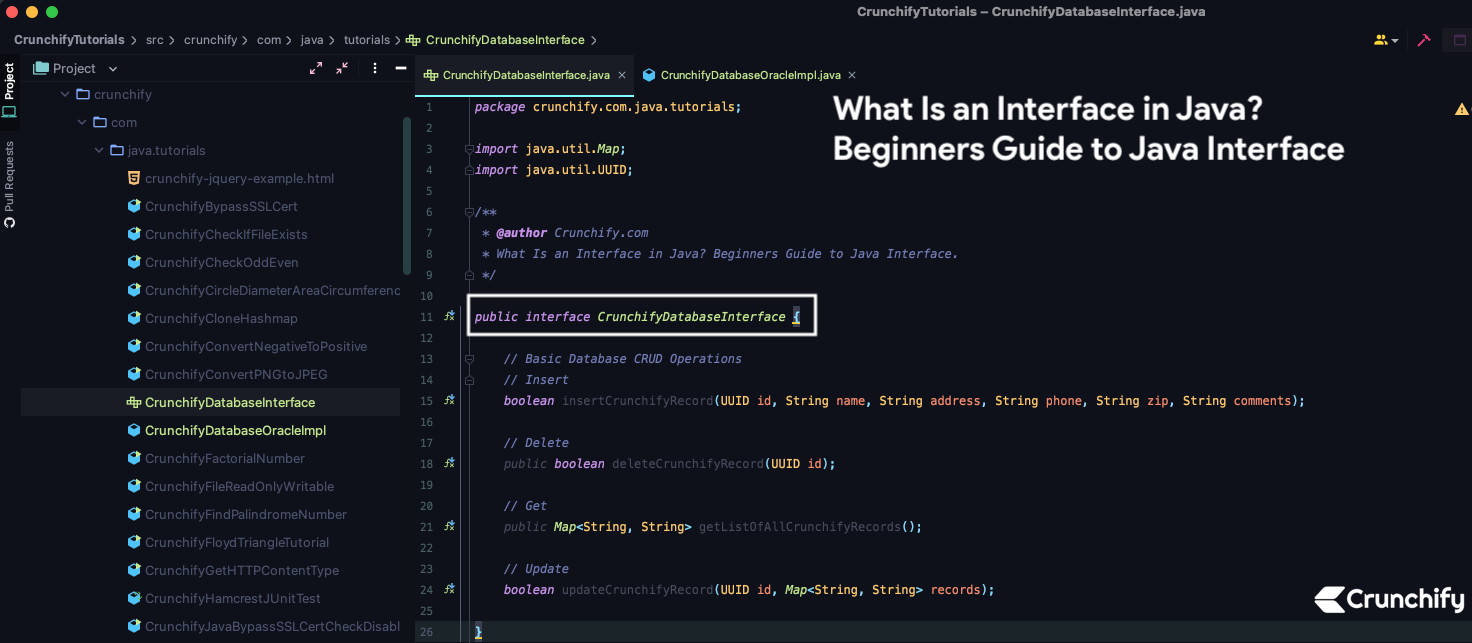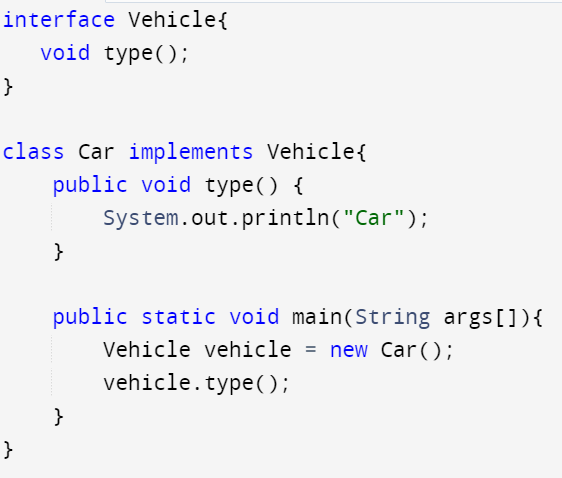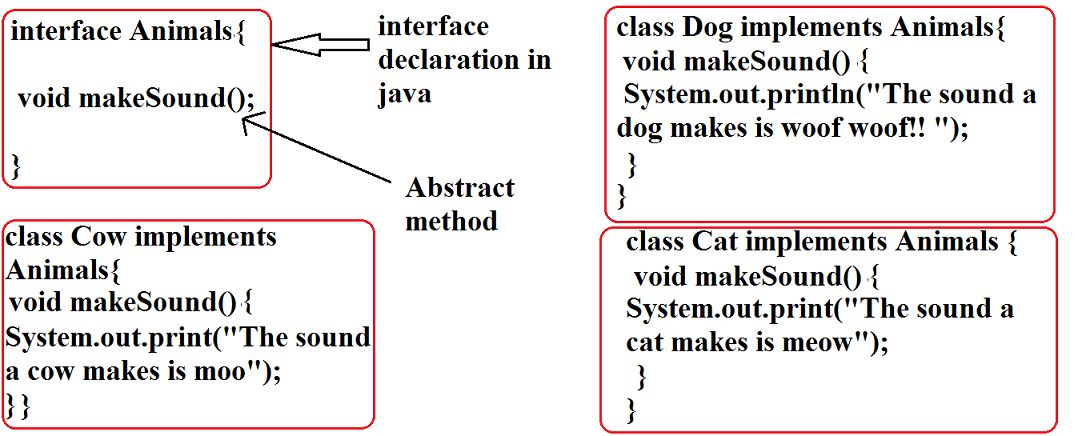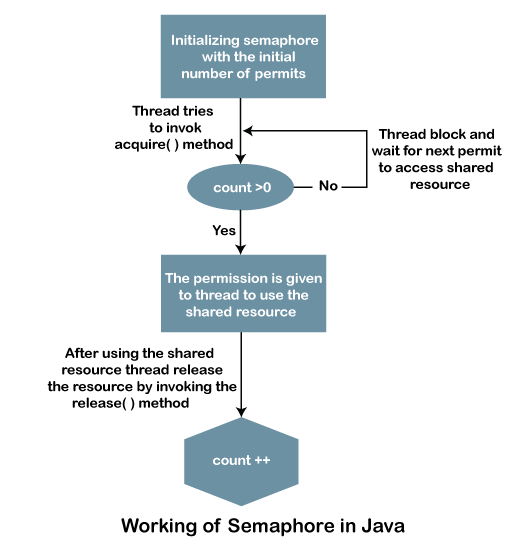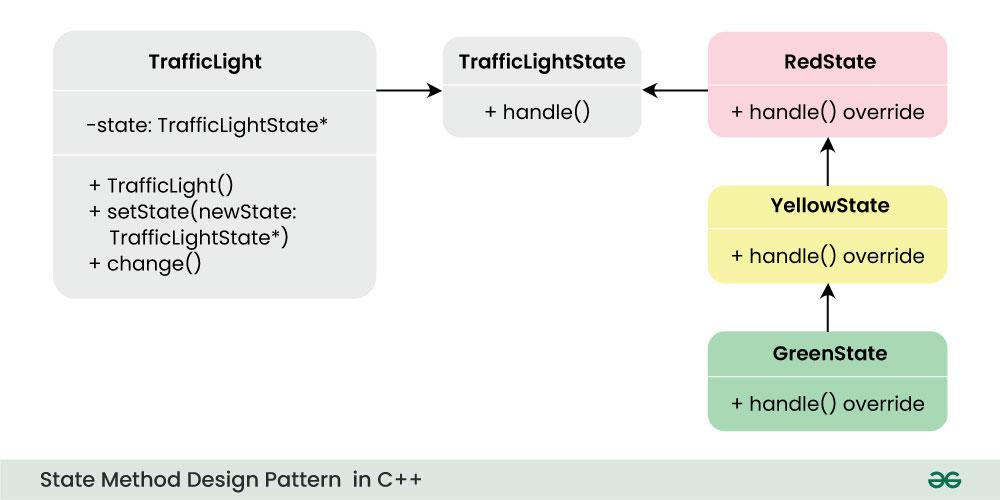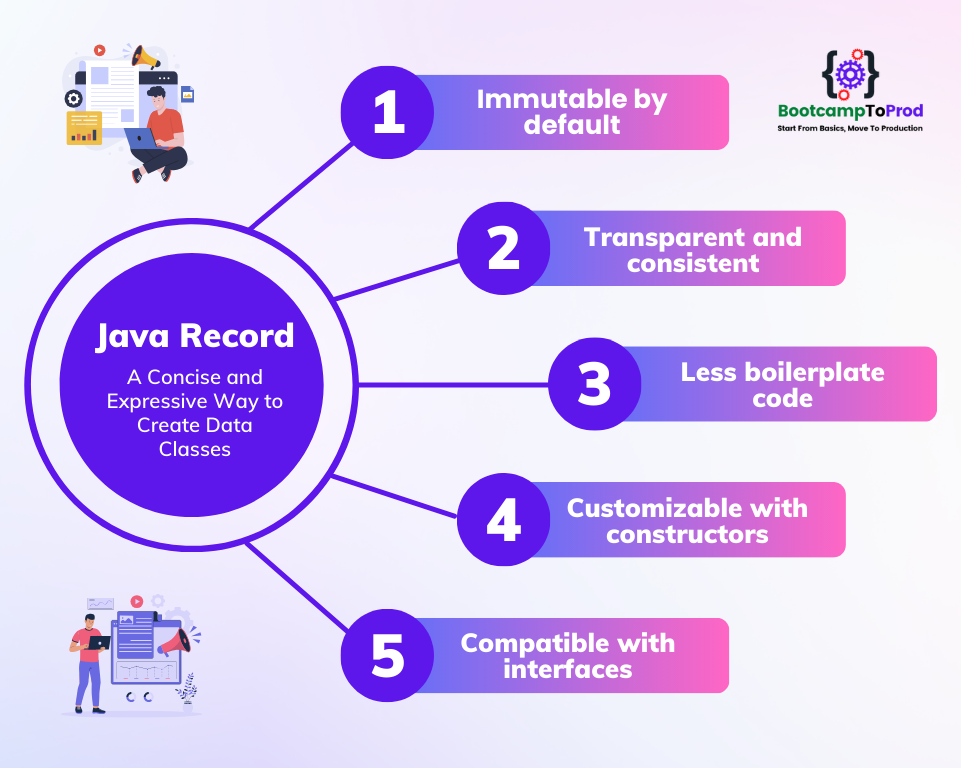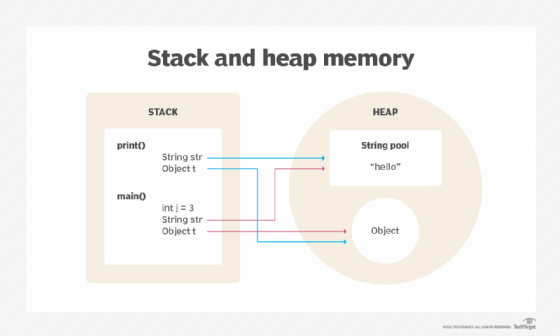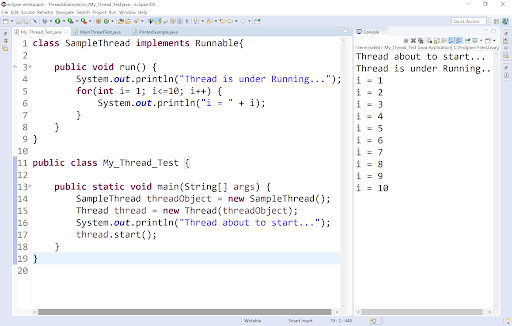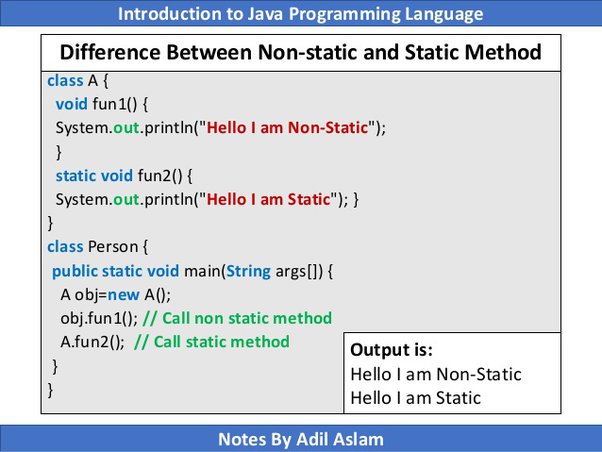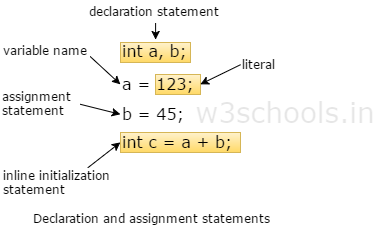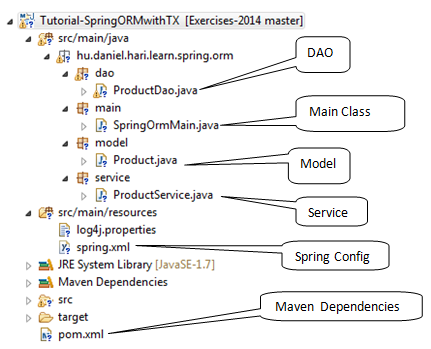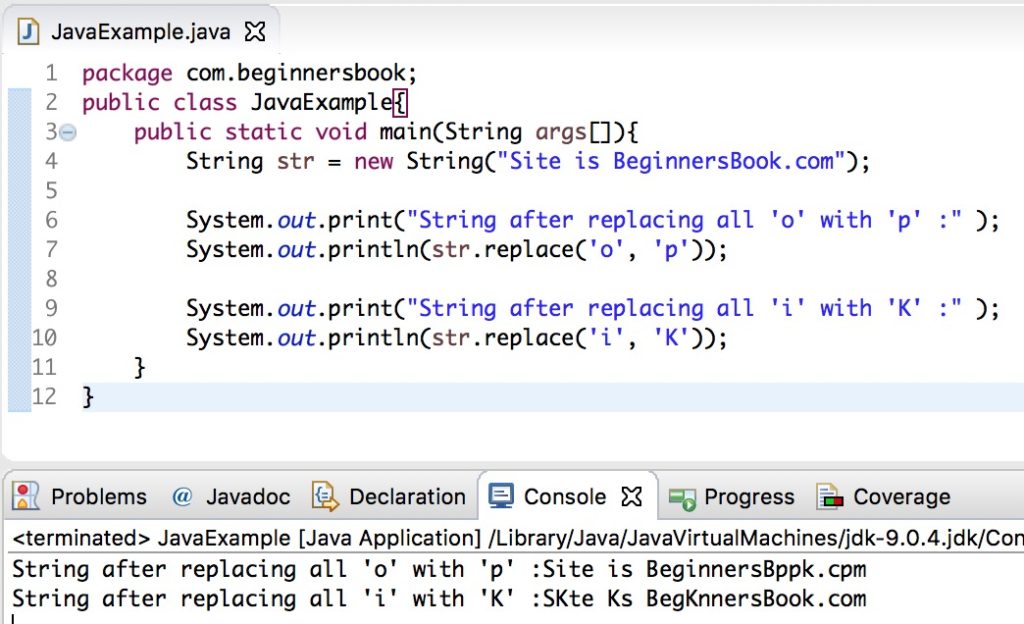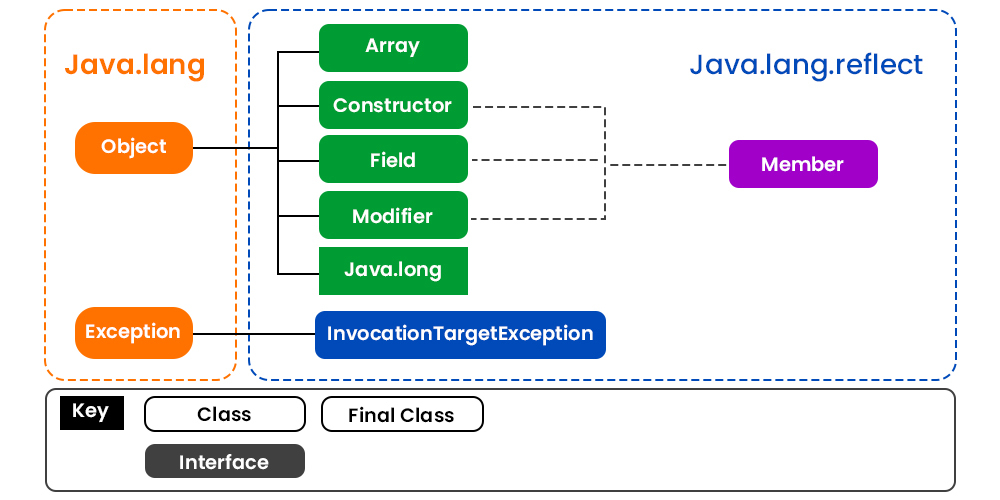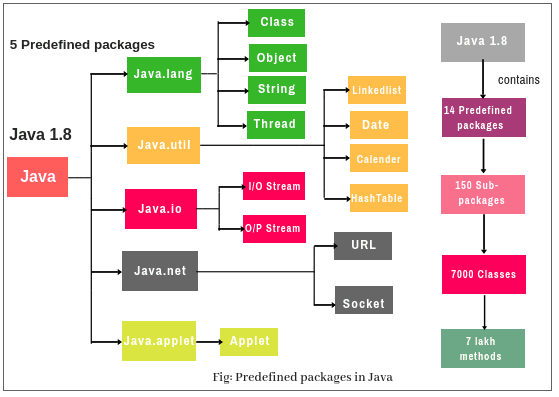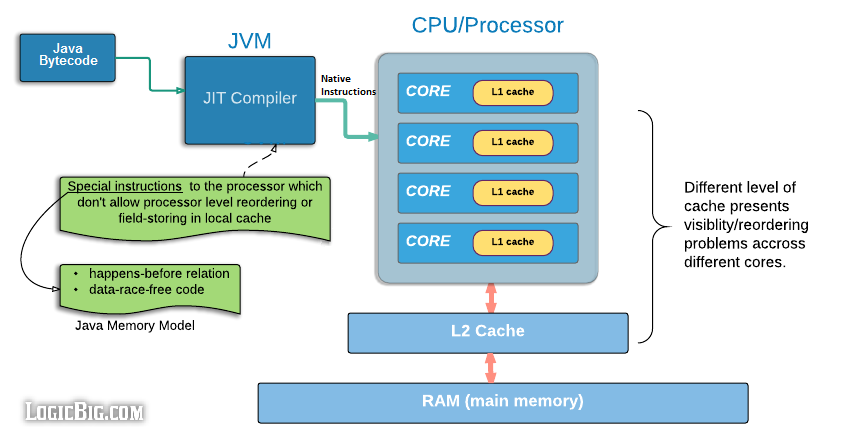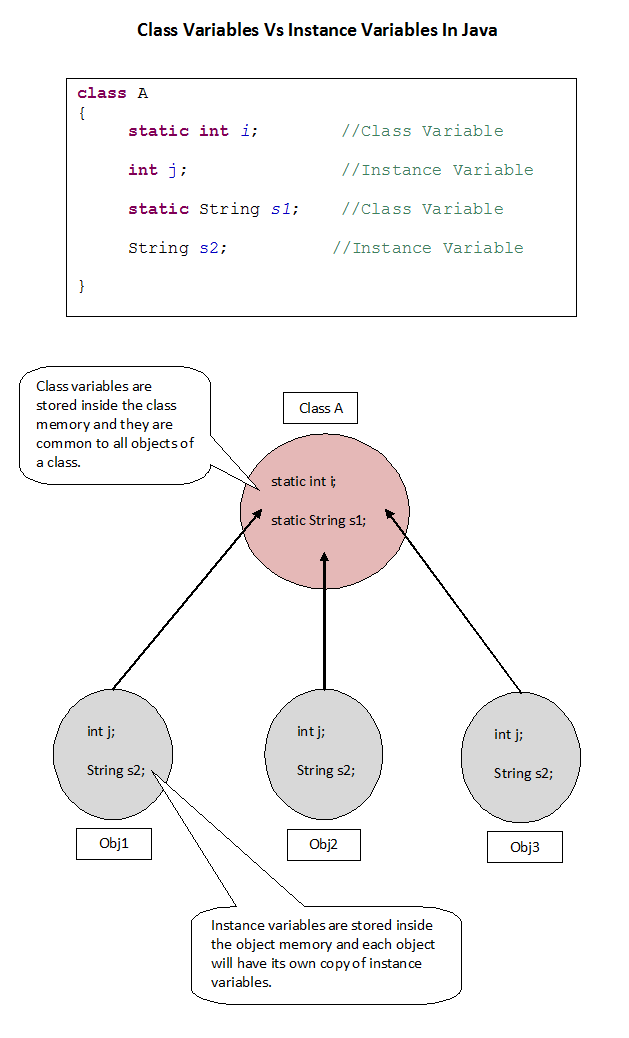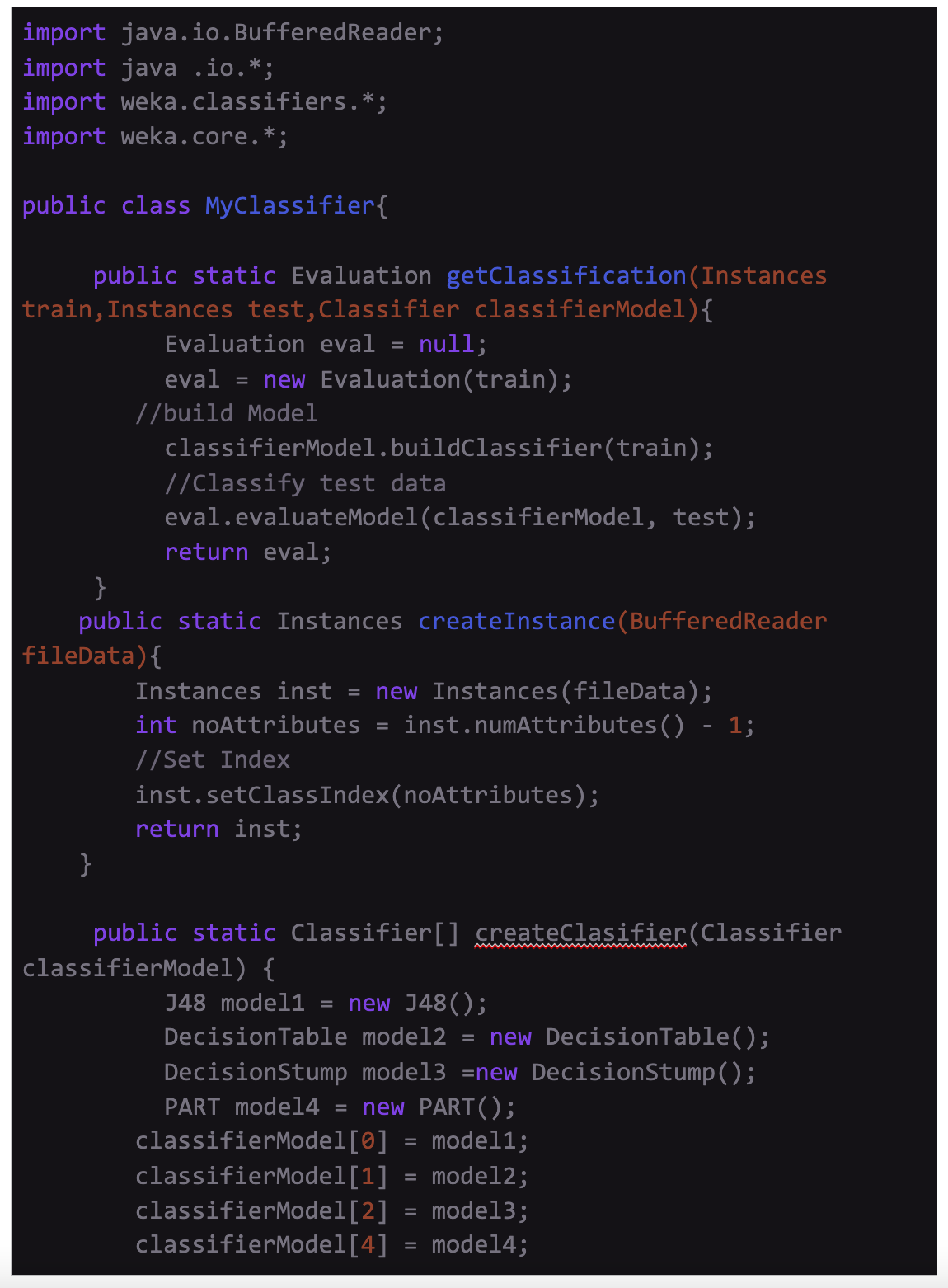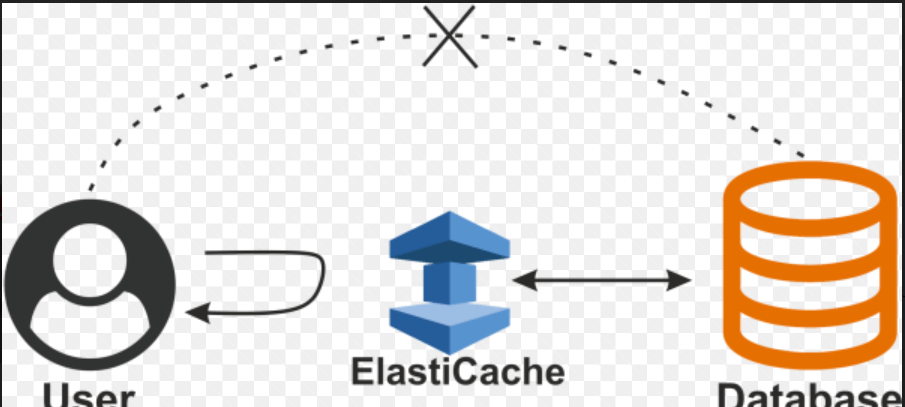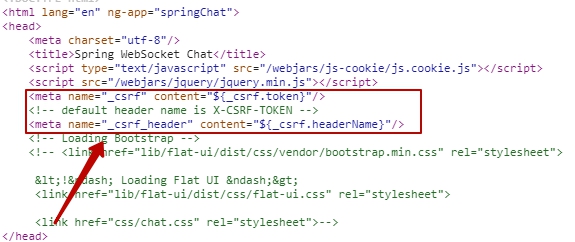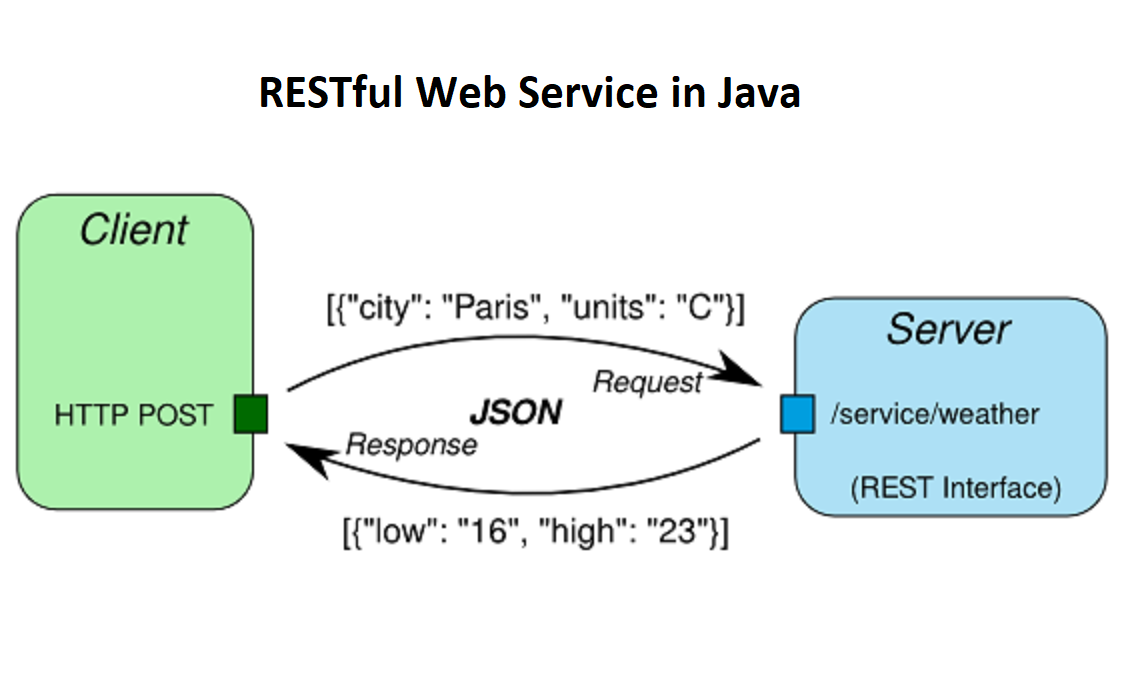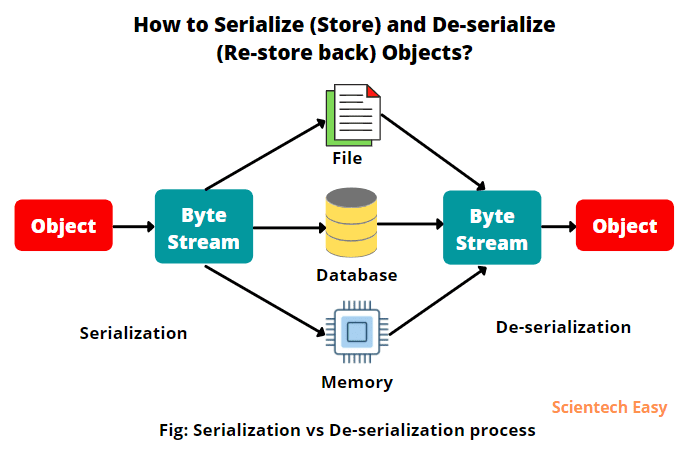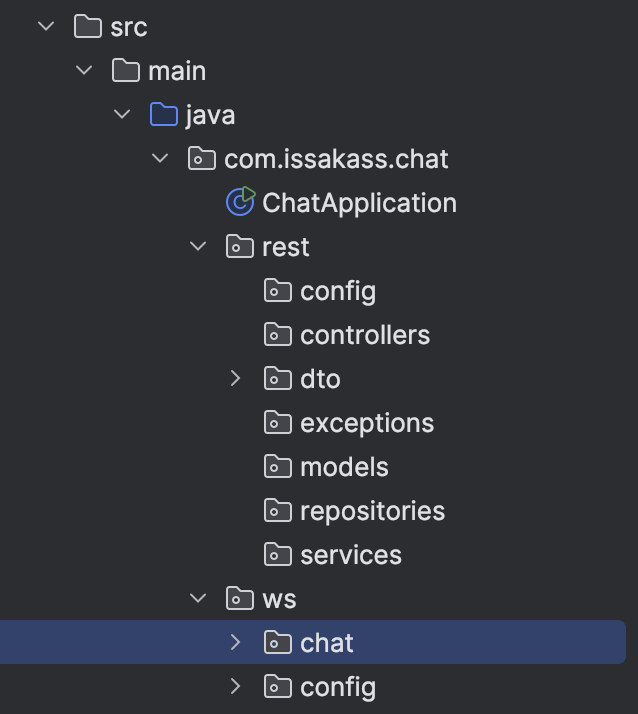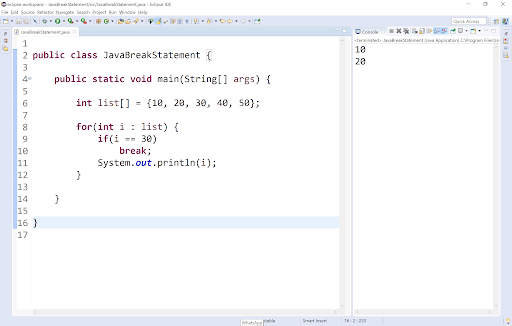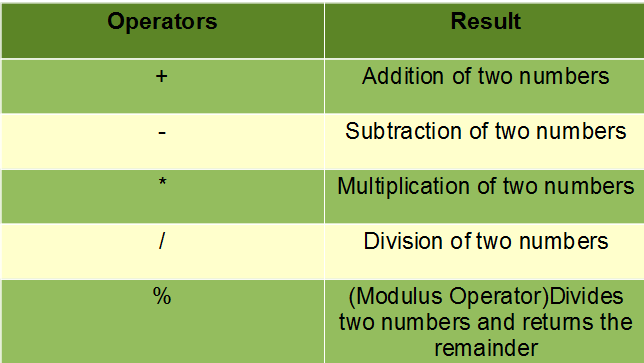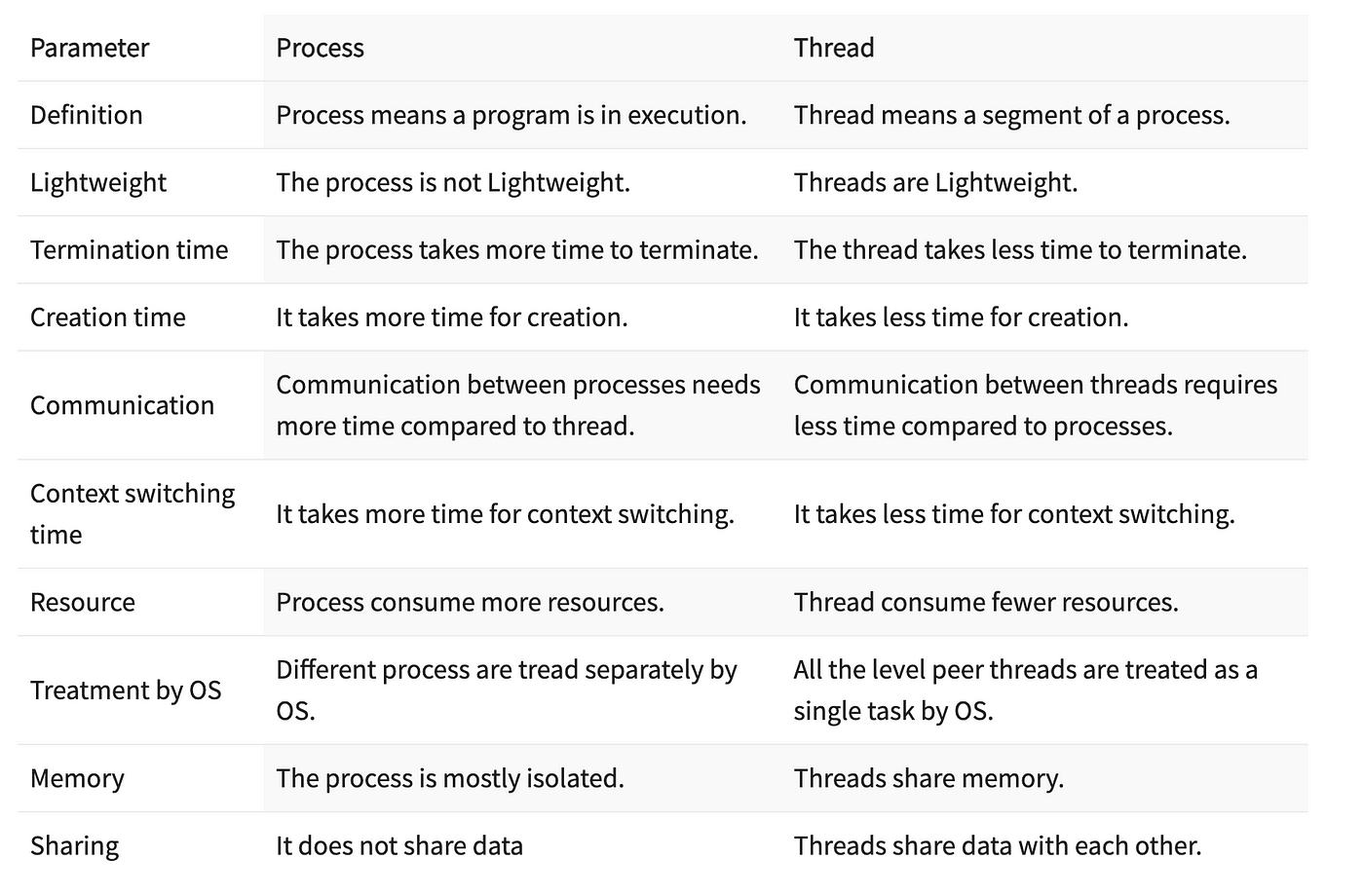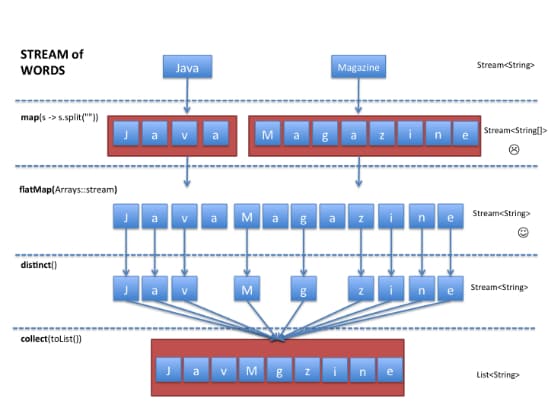implementing interface in java
implementing interface in java
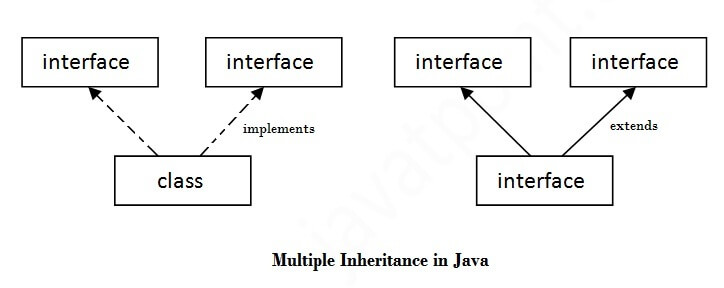
I'd be happy to help you with that.
Implementing an interface in Java is a fundamental concept in object-oriented programming. An interface defines a contract or a blueprint of the methods that must be implemented by any class that implements it. Here's a step-by-step guide on how to implement an interface in Java:
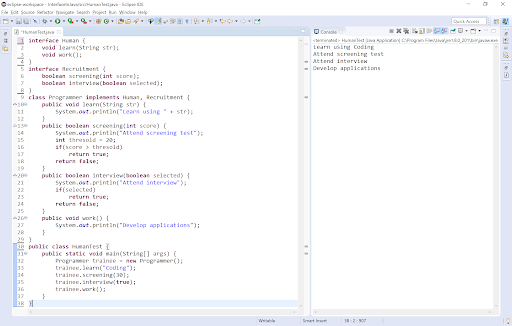
Let's say we have an interface called Animal with two methods: makeSound() and eat(). The Animal interface would look like this:
public interface Animal {
void makeSound();
void eat();
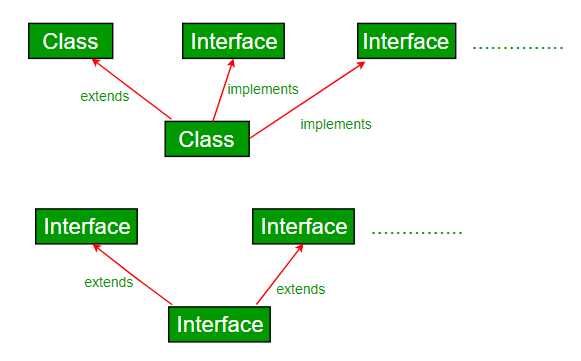
}
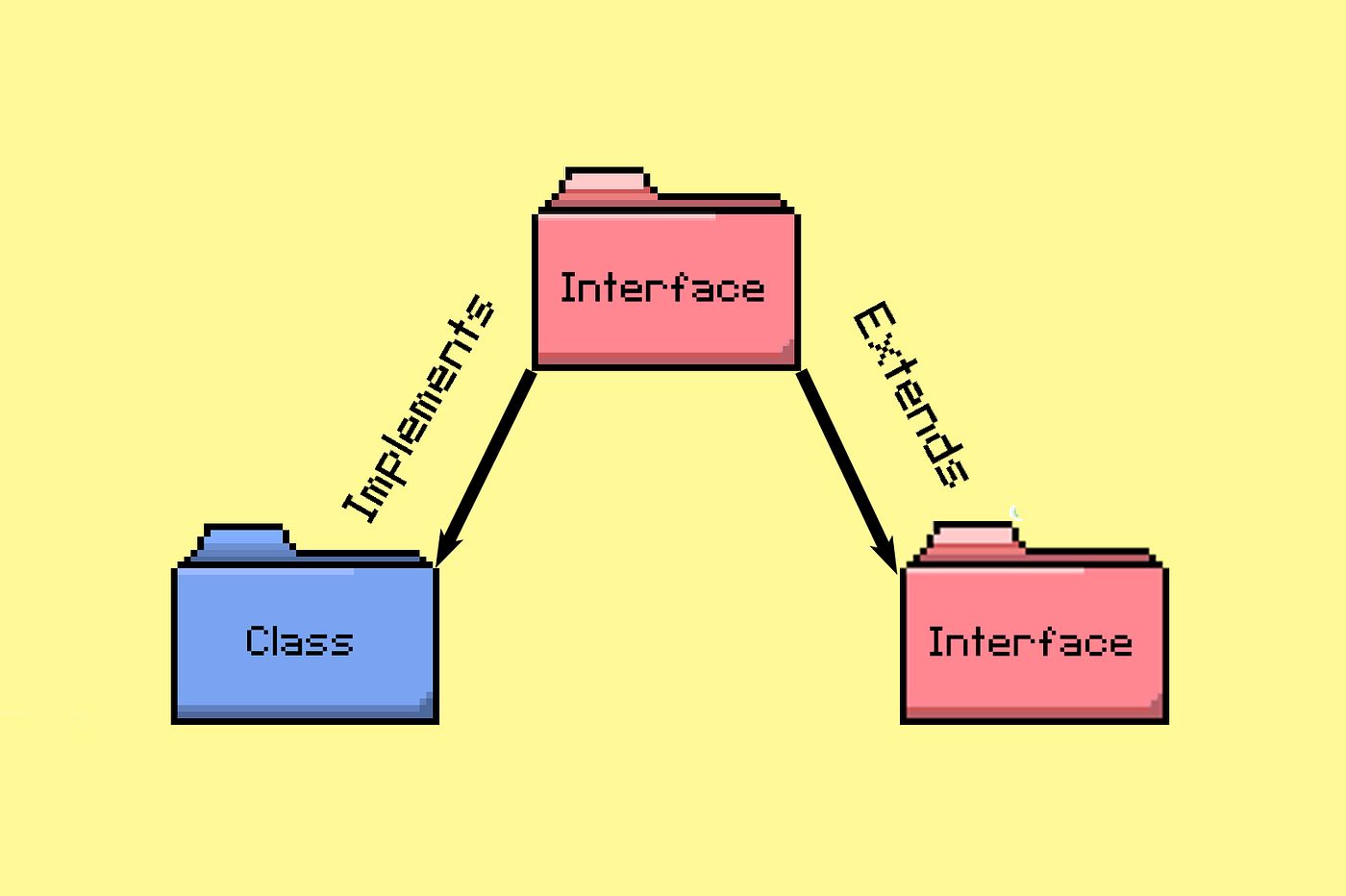
To implement this interface, we need to create a class that implements the Animal interface. For example, let's say we want to create a class called Dog that implements the Animal interface. The Dog class would look like this:
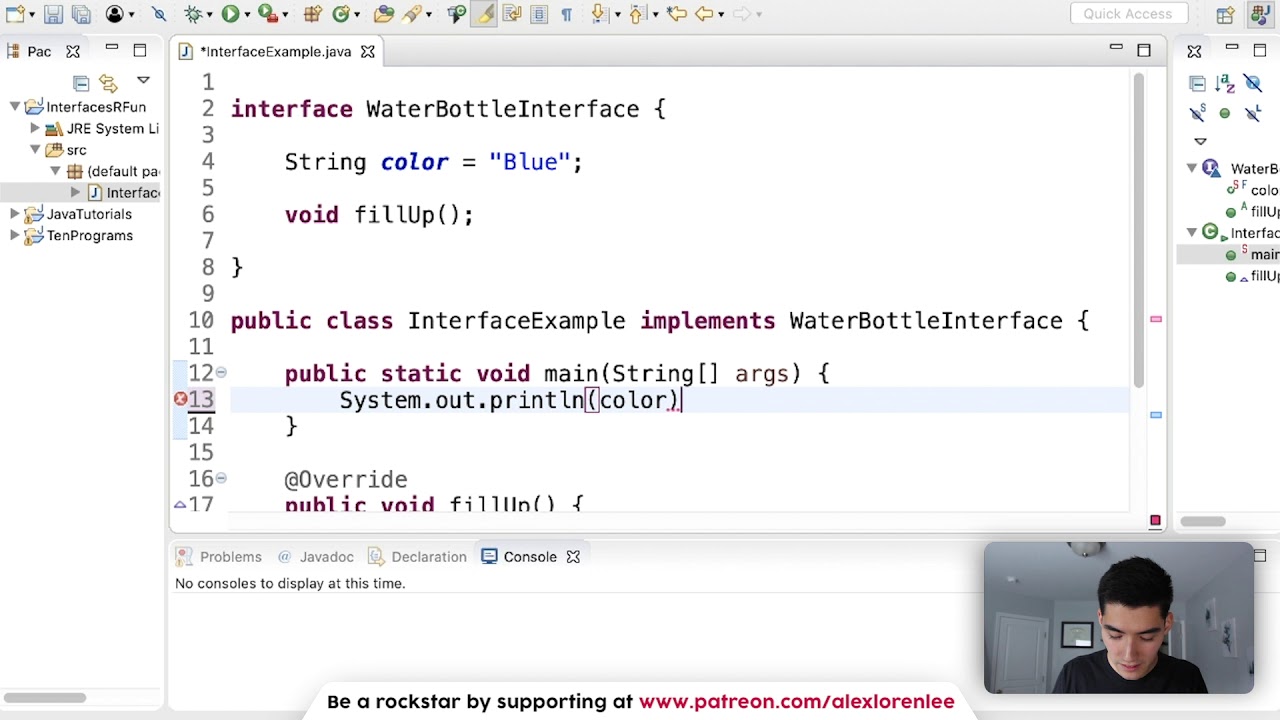
public class Dog implements Animal {
@Override
public void makeSound() {
System.out.println("Woof!");
}
@Override
public void eat() {
System.out.println("Eating dog food...");
}
}
In the Dog class, we're implementing the two methods defined in the Animal interface. The @Override annotation indicates that we're overriding a method from the interface. If the method name or signature doesn't match the one in the interface, the compiler will throw an error.
Now let's create another class called Cat that also implements the Animal interface:
public class Cat implements Animal {
@Override
public void makeSound() {
System.out.println("Meow!");
}
@Override
public void eat() {
System.out.println("Eating cat food...");
}
}
As you can see, the Cat class is implementing the same two methods as the Dog class. This demonstrates polymorphism, where different classes can implement the same interface with their own specific behavior.
To use the Animal interface and its implementations, we can create an array of Animal objects and store instances of both Dog and Cat in it:
public static void main(String[] args) {
Animal[] animals = new Animal[2];
animals[0] = new Dog();
animals[1] = new Cat();
for (Animal animal : animals) {
animal.makeSound();
animal.eat();
}
}
In this example, we're creating an array of Animal objects and storing instances of both Dog and Cat in it. Then we iterate through the array using a foreach loop and call the makeSound() and eat() methods on each instance.
When we run the program, we'll see the following output:
Woof!
Eating dog food...
Meow!
Eating cat food...
As you can see, the Animal interface provides a way to define common behavior for different classes. The implementations of the interface provide specific behavior for each class.
In summary, implementing an interface in Java allows us to define a contract or blueprint of methods that must be implemented by any class that implements it. This promotes polymorphism and facilitates code reusability.
interface example in java

I'm happy to help! Here's an example of an interface in Java that demonstrates how you can define a method signature with no implementation, as well as several other important concepts.
public interface Vehicle {// This is the abstract method declaration,
// which means it has no implementation.
String getMake();
// This method takes an argument and returns a value.
int calculateSpeed(int speed);
// This method does not take any arguments and
// returns void, indicating that it does nothing.
default void honkHorn() {
System.out.println("Beep Beep!");
}
}
In the above code:
We define an interface namedVehicle. The getMake() method is declared but not implemented. This means you have to override it in any class that implements this interface. The calculateSpeed(int speed) method takes a single integer argument and returns an integer value. It does not necessarily have anything to do with the make or model of a vehicle, but we can call it whenever we need to calculate a speed value based on some input. The honkHorn() method is also declared in this interface, which is a good practice because even if a class implements an interface doesn't mean that every single instance of that class has to implement the default behavior. For example, you can create a new vehicle that honks its horn differently than what's provided by the Vehicle interface.
Here's how we could use this interface with a concrete class:
public class Car implements Vehicle {private String make;
private int speed;
public Car(String make) {
this.make = make;
}
@Override
public String getMake() {
return make;
}
@Override
public int calculateSpeed(int input) {
// Assuming we're calculating the speed based on some algorithm.
return (input * 2) + 30;
}
}
In this code, the Car class implements the Vehicle interface. It overrides the getMake() and calculateSpeed() methods to provide its own implementation of these behaviors.
Now let's see how we can use these classes:
public class Main {public static void main(String[] args) {
Car myCar = new Car("Toyota");
System.out.println(myCar.getMake()); // prints "Toyota"
int speed = myCar.calculateSpeed(100);
System.out.println(speed); // calculates the speed based on the input
myCar.honkHorn(); // outputs "Beep Beep!"
}
}
In this example, we create an instance of Car named myCar, then use it to print its make and calculate a new speed value. Finally, we call honkHorn() on the vehicle (which is actually implemented by the default method in the interface), which outputs "Beep Beep!".
I hope this helps you understand Java interfaces better!
